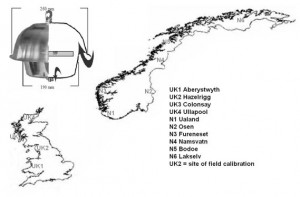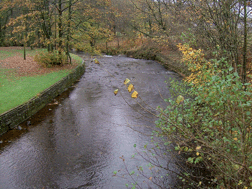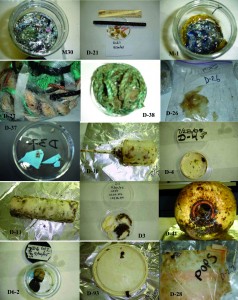Zero-valent iron microparticles that include an organic component efficiently destroy carbon tetrachloride in soil, say US scientists.
Carbon tetrachloride was used in pesticides, degreasers, fire-extinguishers and for dry cleaning until it was banned in the US in the 1970’s due to concerns about its cancer causing properties and the effect on the environment. Continuous applications, such as protecting grain in storage, contaminated the surface soil and as it is a very persistent compound it can find its way into the local drinking water source so clean-up processes are very important.
![C0EM00039F-250-FOR-TRIDION_tcm18-186691[1] Iron microparticles](https://blogs.rsc.org/em/files/2010/07/C0EM00039F-250-FOR-TRIDION_tcm18-1866911-225x300.jpg)
Modified iron microparticles clear up soil
Nanoparticles of zero-valent iron (ZVI) have been considered for in situ remediation of carbon tetrachloride, but complex degradation mechanism means that often not all the carbon tetrachloride is reduced to harmless products and toxic compounds such as chloroform are produced.
Now Jorge Alvarado and colleagues at the Argonne National Laboratory have investigated the use of modified zero-valent iron microparticles that include a controlled release carbon component. The organic component of the microparticles is nutrient rich, hydrophilic has a high surface area capable of supporting the growth of bacteria in the groundwater environment, explains Alvarado. Processes induced by the bacteria growth, such as production of volatile fatty acids that can act as electron donors, support the degradation reaction, making it more efficient.
‘The main advantages of this method are the combination of microbiological and physical effects that create the conditions needed [to destroy the carbon tetrachloride],’ says Alvarado. ‘Concentrations of carbon tetrachloride in our laboratory studies decreased by more than 90%.’ Additionally, field studies carried out in a highly contaminated area in Kansas showed concentrations dropped to below regulatory levels after 16 months of observation.
Tom Mallouk, an expert in the use of nanoscale materials for environmental remediation, comments ‘this is an interesting study that shows the effectiveness of zero-valent iron for remediation of carbon tetrachloride, both in the laboratory and in a field test.’
Alvarado says there are still many challenges in this research area, including understanding the mechanism and how the different processes involved interact to create the conditions needed to destroy the carbon tetrachloride, understanding the effectiveness of the zero-valent iron product for long distances and improving application techniques in aquifer systems.
Read the full article.
















![C0EM00039F-250-FOR-TRIDION_tcm18-186691[1] Iron microparticles](https://blogs.rsc.org/em/files/2010/07/C0EM00039F-250-FOR-TRIDION_tcm18-1866911-225x300.jpg)